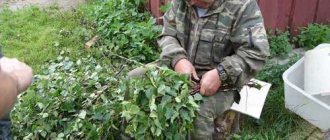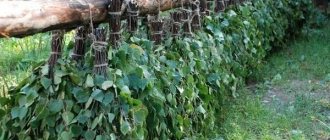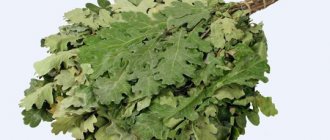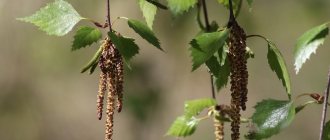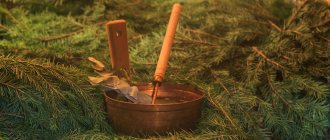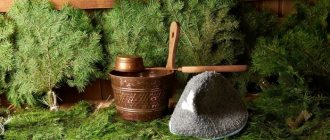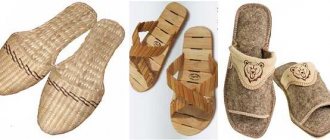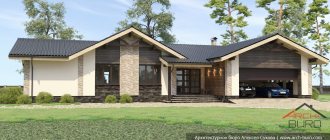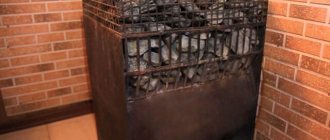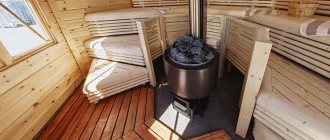Business in the production of bath brooms – one of the least expensive production niches. It has serious prospects and allows you to provide yourself with high profits with minimal investments.
The bathhouse is perhaps one of the favorite places for any Russian. The relevance of such a business is great, and the demand for the services of bath complexes does not decrease even at the present time. And even though an analogue appeared in the sauna format, the bathhouse still arouses greater interest among citizens.
It is impossible not to note the healing properties of the bath - improving overall well-being, relaxation, and normalizing the emotional state. That is why the production of bath brooms as a business is not only profitable, but also a useful form of entrepreneurship.
Seasonality of business
It should be noted right away that preparing bath brooms as a business is a very short-term activity. There is no specific time for harvesting throughout the country; the difference in climate zones is too great. However, there are several conditions by which you can determine that it is time to start harvesting.
- Young, strong, medium-sized foliage without damage or growths is best suited for brooms.
- The harvesting time for birch, oak, linden, and other types of brooms varies. They are not done at the same time.
- The production of bath brooms occurs before the trees bloom.
However, there is still one rule for the entire country when preparing brooms. Even if you “missed” the moment when there were young leaves on the trees, remember that according to popular belief, brooms for a bath can be prepared until July 12 - Peter’s Day.
In central Russia and the Urals, the period for harvesting brooms and its duration is approximately two weeks, starting in mid-June.
According to popular belief, the preparation of brooms for the bathhouse begins after the Orthodox holiday - Trinity Day.
First profit
And now the moment of truth has come - the sale of goods. Taking several samples of his bath brooms, he visited the city bathhouse and offered the products to the director. She said that they already have their own supplier. Having found out the price at which the bathhouse buys brooms, I offered my own for 10 rubles cheaper and without any paperwork and accounting. How to become an accountant. The director couldn't resist.
As a result, birch brooms cost 30 rubles, and oak brooms cost 50 rubles. The total came out to about 46,000 rubles. This is a month of hard work.
I gained experience, drew conclusions, 46,000 rubles is still a small amount, considering that you need to deduct gasoline costs. In 2014, I set my sights on retail. I got a job as a courier for one company, saved up a small amount and repaired the balcony - paying special attention to the seams so that droplets of water did not get inside. I also started saving money for advertising, hoping to collect about 70,000 rubles by May, but at the start of the season I had a little less than 50,000 rubles on hand.
Where to start a business
First of all, you need to take care of the sales market. Otherwise, all the prepared brooms will have to be spent solely for your own pleasure. You need to visit all the baths and saunas that are in the city.
You can also visit nearby neighboring settlements and analyze the situation there. What if it becomes possible to sell a large wholesale batch at a lower price than competitors, which suits both you and the other party? So, sales have been found, it’s time to get down to business.
Of course, you can’t prepare brooms in the city - you need to go to the village. Moreover, in one where there is enough material for brooms, that is, birch and linden groves, oak oak groves, and alder grow.
By the way, thrill-seekers and true sauna connoisseurs are often interested in the presence of coniferous and juniper brooms. In general, brooms are also made from rowan, nettle, bird cherry, wormwood, maple, hazel, ash and eucalyptus - each variety has its own unique healing and relaxing properties.
Advice: it is better to prepare as many varieties of brooms as possible, more traditional ones - birch and oak, and less of other varieties. But put a higher price tag on them, due to the rarity of demand. The main thing for the seller of these products is to correctly position his product, prepare for sales, find and tell customers interesting information about rare types of brooms. And tell them in such a way that you immediately want to buy them and try them out.
After a suitable place for harvesting has been found, you need to assemble a team of local residents who will make brooms. There will be no problems with this. It is now quite difficult to find work in villages and villages, and therefore the villagers will only be glad to have the opportunity to earn money.
The cost of one broom during production should be based on the calculation of the selling price, the cost of delivery to the destination, possible rejection by the end buyer and your difference. Payments to workers can be made either daily or at the end of the harvesting season.
The main problem in this business idea is the drinking population of the country’s villages. If you pay money for work today, then no one may come to work tomorrow. Therefore, you need to place a senior person over the procurement team, who will control the entire procurement process and report to you.
It is not at all necessary to hire young and strong men to produce brooms. Pensioners, women and even teenagers are quite suitable. The older generation has invaluable experience acquired over many years of life, which is very useful for the manufacture of high-quality products.
Features of selling brooms
The quality of the brooms is undoubtedly a decisive factor. But we must not forget about other production features. Even at the moment of collecting raw materials, you need to think about who to sell your goods to. The main consumers will be:
- city bath complexes;
- saunas;
- health centers;
- tourist resorts for recreation;
- owners of cottages and private houses.
You need to work with such clients in a targeted manner, offering your services. If you can’t attract consumers, you can sell brooms at the city market or on the highway.
The most effective ways of promotion will be:
- placing advertisements on special boards on the Internet and in local newspapers;
- word of mouth (rumors will spread very quickly if the quality of the brooms is really good);
- mailing list and creating your own website (suitable for serious businessmen with large production volumes).
Do I need a permit to cut branches?
According to current legislation, the harvesting of non-timber forest resources, which includes tree branches, is absolutely free (Article 32 of the Forest Code of the Russian Federation). However, since in this case the cutting of branches has signs of an industrial scale and is carried out for the purpose of subsequent resale, the supervisory authorities (in this case the forestry department) may require a certificate of registration of the individual entrepreneur.
In addition, in many regions it will be necessary to pre-register a site for harvesting in the forestry department.
In reality, this is rarely observed. Most often, harvesters choose remote villages where foresters rarely visit. It turns out that about 80-85% of all bath brooms in the country were procured illegally. Often, foresters simply turn a blind eye to cutting branches for brooms for a certain amount.
What are floor brooms made of?
Throughout its centuries-old history, the broom has remained virtually unchanged in appearance - only the materials from which it is made have changed. You can make this cleaning device out of almost anything. Basically, brooms are made from stems and branches of bushes and herbs, and twigs. Most often they are created from a special plant - sorghum, but we will talk about it a little lower.
To create brooms, the stems of a plant such as chiliga or wild acacia can be used. It has quite strong and flexible shoots. But such a broom is not suitable for cleaning the house because of its density and roughness.
One of the modern broom options
Brooms are also knitted from common wolfberry, a shrub popularly called “wolf berry.” By the way, this is the plant that produces the popular goji berries. But a soft broom can be made from St. John's wort, wormwood, and oregano. If you sweep the floor with such a product, the house will smell fragrant, and moths and other insects will not appear. Spiders could be expelled from a home by sweeping it with a broom made of reed stems. In villages they still use brooms made from nettles and linden branches.
The Slavs often used millet stems to create brooms. But now such products have practically sunk into oblivion - they have been replaced by softer brooms made from broom sorghum.
You can even make good money making brooms
How much money will be required to start production?
In order to organize the production of bath brooms, a large initial capital is not required. The main costs, provided that there is a room available for drying brooms if necessary, are:
- acquisition of equipment and consumables necessary for procurement;
- transportation costs for transportation to the buyer or to the place of drying;
- salary fund.
As a rule, beginning entrepreneurs spend between 20 and 30 thousand rubles. From the second harvesting season, costs decrease - after gaining experience from the first harvesting season, you will already know where and how you can save.
We recommend reading:
- autobath on wheels
- private bath and sauna as a business idea
Making bath brooms as a business: what are the advantages
Selling bath brooms as a business has a number of advantages compared to other types of income:
- You can do without initial capital and financial investments.
- To organize production, no special equipment or staff of workers is required.
- The bath accessory is intended for one-time use, so there will always be a demand for this product.
- The preparation does not require any special knowledge.
- Raw materials for production are publicly available; their use does not require official permission.
- The first income can be received in a relatively short period of time (0.5-1.5 months).
However, such a business has one noticeable drawback: the demand for the product remains throughout the year, and you can only produce it for 3-5 months in the spring/summer.
Harvesting technology
At first glance, the technology for making bath brooms is so simple that even a child can handle it. But this is only at first glance. In order to assemble a really good broom, and not just a bare broom, you need to know several nuances - the harvesters.
Firstly, the optimal length of a broom is from 40 to 60 centimeters without a handle, the length of which should be 10-13 centimeters - so that it is comfortable to hold in your hand. But when folding the broom, you need to make the handle 1-2 centimeters larger (later the edges of the handle will align). The branches should be straight, not brittle, not dry.
First, branches for brooms are cut. Cutting separately for each broom means complicating the harvesting process, so a large pile of branches is cut at once. Afterwards, during the folding process, about 20-30% of them are rejected.
The broom is folded with the right side of the leaves facing inward. The volume must be determined “by eye” so that the broom is neither “skinny” nor too “lush”. The branches for the handle are cleared with a knife. Some difficulties in assembling brooms occur only on the first 10-15 products. After this, the process becomes automatic. It is this monotony of work that is the main difficulty in harvesting.
After the broom is folded, the handle must be tightly tied with twine in two places - at the beginning and at the end. It is advisable to make the tie not in one place, but to stretch it by a centimeter for reliability. The final stage will be cutting off the uneven ends of the handle of the product.
In 8-9 hours of work, one person can make from 40 to 50 brooms and even more, taking into account the time for cutting and selecting branches.
How I got the idea to start selling birch brooms
Good day! My name is Artyom, I live in the city of Chelyabinsk. At the time I started my business (2013) I was 23 years old. Every season I sell bath brooms. But first things first.
After studying at the university, I ended up in a village called Russian Techa. I was looking for some ways to earn money. This was problematic, at that time there was no way to settle in the city, and Russkaya Techa was a small village. And no one needed a certified civil engineer here; the last building was built several years ago.
Once, while visiting the city, I saw my grandfather selling bath brooms on the street! After that, I googled what and how bath brooms are made from. I myself am not a bathhouse fan and have never used this device. I found a lot of articles, tips, and videos on how to properly make such a product. I chose, as it seems to me, the most practical option. After all, my main task was to make as many high-quality products as possible, and to do them quickly! Did more, earned more, simple arithmetic.
Upon arrival in the village, he began to actively engage in the manufacturing process. I drove deep into the forest, away from the highway and the river, which was polluted. The Techa River does not have the best history, to put it mildly. In the post-war period, the Mayak production facility dumped radioactive waste directly into this river. Moreover, in 1957, on the territory of the Mayak production association, an accident occurred, known as the “Kyshtym accident”. A container containing radioactive waste exploded. This led to a significant increase in radiation in the area.
Drying room
The most convenient place for drying brooms is the attic of a private house, a village barn, a barn or even a simple shed - in general, any dry, dark place; direct sunlight will ruin the preparations. In addition, it is advisable to avoid drafts. Among real bathhouse attendants, it is generally accepted that the wind blows its aroma out of the broom. Brooms are hung on a rope or on a long pole, tied in pairs to save space. The optimal temperature for drying is from 100 to 250 C. The drying time for an ordinary birch broom is one and a half to two weeks. Oak ones take a little longer to dry. And brooms in rare demand last even longer.
A good dry broom has a uniform green color. No yellow spots or black spots on leaves. The buyer will either send it to scrap or buy it for next to nothing. Therefore, drying brooms is one of the most important stages of their production, requiring a competent approach and attention. The storage time of a dry broom is up to one year.
City dwellers can use a garage or balcony for drying brooms (just not on the sunny side!). But it is simply impossible to accommodate an industrial volume in such premises, so it is still worth looking for a suitable place there - in the village, negotiating with the residents, and maybe paying a little.
Purchase of necessary equipment
We figured out the room - it should be well ventilated, dry, protected from sunlight. What kind of equipment will a novice entrepreneur have to purchase? If small production volumes are planned, the following tools will be sufficient:
- an ax (it is better to choose a compact and light model that is convenient for work);
- knife (it is important that it is as sharp as possible);
- ropes or threads (for transporting raw materials to the place of drying, binding).
Do you need to formalize your activities?
Whether or not to register as an individual entrepreneur for the procurement of brooms, which lasts a maximum of two weeks, is up to you to decide. Private baths and saunas willingly take brooms without documents at a slightly lower price than from other suppliers.
If you are going to sell brooms at retail yourself, then official registration is required. How to register as an individual entrepreneur can be found in this source - https://business-poisk.com/kak-otkryt-ip-samostoyatelno-poshagovaya-instrukciya-po-registracii-ip.html. How to choose tax systems for your business, read here -.
What other taxes does an individual entrepreneur pay, read this link.
Bath broom manufacturing technology
The production technology is simple. It includes only 4 steps.
Step 1. Cut off the branches
Since the procurement of bath accessories is not carried out for individual use, but for subsequent sale, the branches need to be cut/broken in large quantities at once. Their analysis and rejection occurs at the next stage.
To save yourself the extra work, cut branches only from healthy, young trees with fresh, succulent leaves.
Step 2. Fold and tie the brooms
Before you start knitting brooms, you need to pay attention to the following features of this process:
- optimal volume – 5-7 branches;
- ideal length – 45-65 cm without handle;
- handle length – 10-15 cm;
- When harvesting, only fresh, straight, strong branches are used;
- The front side of the leaves in the finished product should be on the inside.
At the last stage of work, the ends of the branches on the handle are cleaned with a knife and tied in two places. A screed width of at least 1 cm will achieve high strength.
Instead of rope, you can use plastic clamps - they are convenient because when the broom handle dries, it can be tightened additionally.
Step 3. Align the handle
When the broom is ready, the uneven ends of the branches on the handle need to be chopped off with an ax.
When calculating the length of the handle and choosing a place for the tie, you should remember the need for subsequent alignment, as a result of which the handle will become shorter by 3-5 cm.
Step 4. Dry and pack
In order for the broom to retain its aroma, it is necessary to dry it properly. A cool, dry room is perfect for this. The finished products are hung around its perimeter and allowed to dry well for 1-2 weeks. After this they are packaged in plastic bags.
If drying is carried out on any horizontal surface, the products should be periodically turned over so that the leaves dry well and the process of rotting does not begin.
In a work shift of 8 hours, one person can produce about 50 pieces.
Useful video: preparing brooms
How much can you earn from producing brooms?
The main question that attracts everyone who wants to start their own small business making brooms is: how much can you earn from this? A team of 5 people can prepare up to 4 thousand birch brooms in a season (2 weeks). After the birch trees comes the season for harvesting oak brooms.
The wholesale price of birch brooms this year is 70-80 rubles per piece. That is, the profit will be (at a minimum) 280 thousand rubles. If workers are paid 20 rubles per piece and taking into account the costs of transportation and drying, the net income will be about 30-35 rubles per piece - almost 50%. With these calculations, the total income will be 140 thousand rubles for 2 weeks only on birch brooms.
As the experience of harvesters who have been working for more than one year shows, during a harvesting season you can earn up to 500 thousand rubles “net”!
One of the ways to prepare brooms
What else should you consider when starting production?
An entrepreneur must not only prepare the premises and purchase equipment, but also study the specifics of working in this area.
It will also be important what kind of brooms will be made. Different types have their own time for collection, nuances of collection and drying. Without this, it will not be possible to produce high-quality products, and customer loyalty will largely depend on this. When choosing storage space, it is important to find a place close to the collection of raw materials so that it does not cost a lot of money to transport it. And when working on a large scale, you will need a personal car to deliver products to consumers.
Preparation and storage of brooms
After the work has been done, it is time to prepare the brooms themselves. It should be fan-shaped and about half a meter long. Thick branches should be folded inward, and thin branches should be left at the edges. The length of the handle can be from 10 to 15 centimeters - this will allow you to firmly secure the broom.
If you are going to sell all the brooms at once, then you will not have a question about storage. But if you decide to sell brooms all year round, you will have to take care of their storage. An attic that is ventilated and always cool is suitable for this. After all, if in winter coolness is not a problem, then in the warm season the temperature in the attic may be too high. Therefore, it is necessary to regularly check and maintain coolness under the roof.
Fir
Good fir brooms are obtained if they are cut in early spring - mid-summer. But fir brooms can be harvested at any time of the year, although they do not turn out as fragrant and fragrant. In general, they are poorly stored. They should not be dried out completely; the needles will simply fall off.
Tie the broom together with a tight fan, thicker branches inward, thin branches outward. The handle is cleared of needles. A fir broom fills the entire steam room with aroma and releases a lot of essential oils, so use gloves. You only need to steam a fir broom for a few minutes, after which it begins to lose its properties.
Time to collect material
In total, the process of making birch brooms takes about a month. The taste of the leaves will help you determine exactly when birch brooms are cut. As soon as they cease to be sweetish and acquire a slight bitterness, they can be cut.
Another time for harvesting birch brooms is determined by pulling the edge of the leaf; only part of the leaf should come off. It is better to look for trees away from roads, highways, and highways. Young birch trees near water bodies are most suitable for this purpose. You need to cut from the middle part of the tree, they are the most flexible.
When to harvest oak brooms
Good oak brooms will be made when the branches are cut in mid-July - early August. Time also depends on the year and latitude. The leaves should already have grown to almost full size and tear well, and the cuttings should be firmly attached to the branch. Choose trees under which burdock grows. This means it is healthy.
Oak brooms for a bath are made into a flat fan, but the leaves are arranged randomly in both directions. To understand how to properly make a broom from oak, it is better if the preparation takes place on the table. It is necessary to distribute the branches into thinner and thicker ones. Fold the thick ones onto a plane so that their leaves form a flat fan, compress their bases into a rope. Then add thin branches to the formed shape, placing the leaves in a common plane. The broom handle from the bases of the branches is well tied with a rope or two tight ties, the branches are pulled together and parallel.
